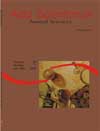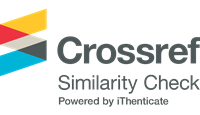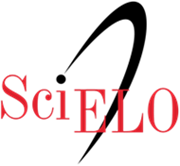<b>Induced spawning of fat snook <em>Centropomus parallelus</em> Poey 1860, with different doses of LHRHa</b> - DOI: 10.4025/actascianimsci.v25i1.2117
Abstract
The fat snook, Centropomus parallelus, is found almost in the entire Brazilian coast and has a great potential for marine aquaculture. The aim of this study was to evaluate different doses of the luteinizing hormone-releasing hormone analogue (LHRHa) on the fat snook spawning induction. Reproducers (weighing from 515g to 1553g) were kept into four tanks (4.8 x 1.8 x 1.2m). They were submitted to three dosages of LHRHa: 30, 50 and 70µg per kg, injected intramuscularly. Spawning rates obtained were 33%, 50% and 56%, and fertilized spawning rates were 26.6%, 37.5% and 50%, respectively, without significant differences among treatments (p>0.05). The mean number (± sd) of eggs released, of fertilized eggs, and of larvae (per kg of female in each spawning) was 193,000 (± 122,000), 199,300 (± 115,000) and 137,800 (± 78,000), respectively, with no significant differences among treatments. There were also no significant differences among treatments in relation to the other traits analyzed: oocyte diameter (435µm ± 26), egg diameter (693µm ± 68), fertilization rate (90.5% ±12) and hatching rate (71.2% ± 19). The results indicated that fat snook could be spawned with 30 to 70µg of LHRHa per kg of fish.Downloads
Download data is not yet available.
Published
2008-04-17
How to Cite
Reis, M. A. dos, & Cerqueira, V. R. (2008). <b>Induced spawning of fat snook <em>Centropomus parallelus</em> Poey 1860, with different doses of LHRHa</b> - DOI: 10.4025/actascianimsci.v25i1.2117. Acta Scientiarum. Animal Sciences, 25(1), 53-59. https://doi.org/10.4025/actascianimsci.v25i1.2117
Issue
Section
Animal Science
DECLARATION OF ORIGINALITY AND COPYRIGHTS
- I Declare that current article is original and has not been submitted for publication, in part or in whole, to any other national or international journal.
The copyrights belong exclusively to the authors. Published content is licensed under Creative Commons Attribution 4.0 (CC BY 4.0) guidelines, which allows sharing (copy and distribution of the material in any medium or format) and adaptation (remix, transform, and build upon the material) for any purpose, even commercially, under the terms of attribution.
Read this link for further information on how to use CC BY 4.0 properly.
0.9
2019CiteScore
29th percentile
Powered by 








































